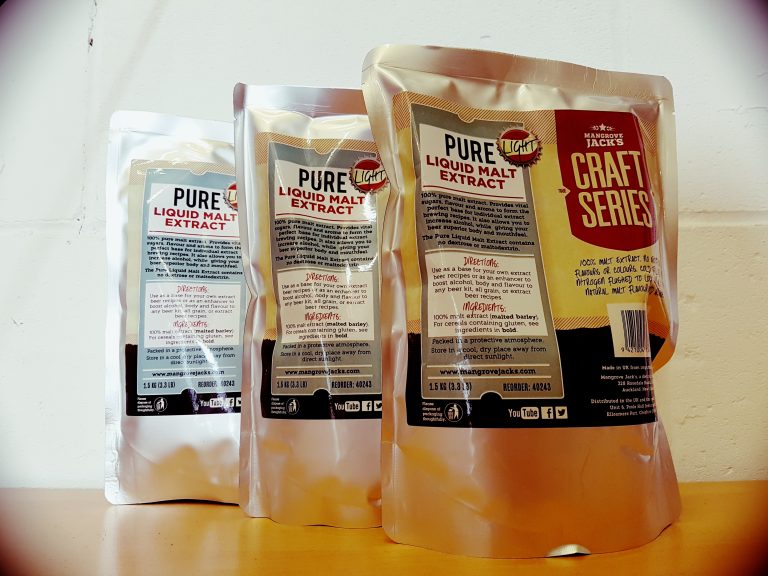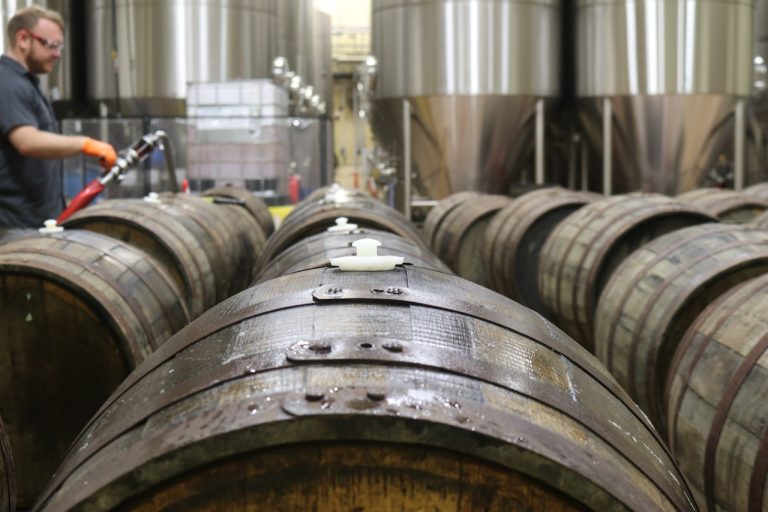Your Hop Substitutions are Wrong!
Update: The first version of our data-driven hop substitute tool is here!
The old hop substitution charts we’ve been using for years as home brewers are all wrong.
I have a strong suspicion that most hop substitutions were previously just picked by brewers based on their own anecdotal experiences. Still other substitutions were probably chosen based on the lineage of the variety or on prominent flavors being similar. Even if the manually-picked list was OK, which one should you use? Usually there are more than one sub listed. This list is equal parts inaccurate AND confusing!
While there is something to be said for this human-picked method, we feel like technology can be better. Technology has already improved other aspects of home brewing. Grainfather, Inkbird and Tilt thermometers are prime examples of this innovation. But why haven’t hops gotten the same level of tech infusion?
Well, Beer Maverick set out to tackle this problem head-on. It’s why we’ve built the most extensive hop database anywhere on the planet. We’ve put in hours-upon-hours researching the minimum and maximum values for everything from acid contents, oils and ratios. We’ve spent weeks normalizing thousands of aroma and flavor descriptors too.
The resulting dataset has allowed us to recently build some amazing tools. First we launched the Hop Comparison Wizard – which quickly went viral. That tool eventually expanded to include an aroma search capability.
Our tools have proven super useful to the brewing community so far. However, the most old-school and opaque thing about brewing had always been the way hop substitution were picked. We wanted to bring this process into the 21st century. With our complete dataset, we finally could.
The Process
We wanted to use the complete dataset to help us choose the best hop substitute. Not only should alpha acids be similar, but so should the hop oils. And the aroma descriptors, radar charts and purposes. Comparing all these values by hand would have taken years, so we decided to use the Pearson Correlation Coefficient instead.
The Pearson Correlation Coefficient will take in two sets of numbers and compares them with one another. The result is a value between 1 and -1. The closer the coefficient is to 1, the more similar the two hops are with one another. A negative number means the two hops aren’t similar enough to being considered a viable substitution for each other.
The values we decided to use as input into the Pearson calculation include:
- Alpha Acids: Average, Minimum, Maximum
- Beta Acids: Average, Minimum, Maximum
- Cohumulone % of Alpha: Average, Minimum, Maximum
- Total Oil Content (mL/100g): Average, Minimum, Maximum
- Average Essential Oil Content Average %: Myrcene, Humulone, Carphyllene and Farsense
- Purpose: Aroma = 1, Dual = 2, Bittering = 3
- Country of Origin: Each country was given a tier number to help group countries like New Zealand and Australia together.
- Aroma Tags: Popular tags were each given a number.
- Aroma Radar Chart Scores: Citrus, Tropical Fruit, Stone Fruit, Berry, Grassy, Herbal, Spicy, Pine, Floral
These variables created a set of 70 numbers that we were able to compare hops to each other with.
The coefficient numbers outputted by our calculator indicate the strength of similarities between each of the provided hops. Coefficients above 0.94 are considered an acceptable substitute, while values above 0.98 indicate a very strong correlation.
Introducing a Weighting System
What we quickly found out was that you can’t have one all-encompassing substitute list. A lot of new hops are classified as dual-purpose, so there should be separate substitution lists depending on the use case. Your substitution list needs to take these different use cases into account.
We found that by introducing a weighting system into our values allowed for us to fine tune our use cases. For instance, hop oils, aroma radar charts and aroma tags don’t have huge impacts on bittering qualities, but they are maybe the most important aspects when it comes to late addition hops.
To help us choose the correct weighting values, we searched around for research papers that helped identify the compounds most important for specific use cases. This information allowed us to create two different weighting systems: one for aroma use cases and another for bittering. The aroma and bittering weights were added together to form the dual-purpose one.
Examples
Update: The first version of our data-driven hop substitute tool is here!
Ok, enough talking. Let’s see how this process works in real life.
First, we are going to look at the eponymous Citra hop. Searching around the internet, we found Simcoe, Mosaic, Centennial and Cascade as suitable replacements chosen via the “old school” way. Using our custom function, we chose a completely different list.

Since Citra is mainly used as an aroma hop, we are going to focus only on that column for now, but all the arguments below hold true for the bittering and dual-purpose columns as well.
When viewing Sultana, Galaxy and Citra on our hop comparison tool, you can see that the three of them are very close in aromas, AA% and oil content.
This isn’t to say that Simcoe and Mosaic are bad choices. Its just that there are better substitutions out there. Here are the results of the manually suggested hops when put through our calculator to find similar aroma hops:
| Hop | Correlation Coefficient | Rank |
|---|---|---|
| Mosaic | 0.9306 | #5 |
| Centennial | 0.9042 | #14 |
| Simcoe | 0.8876 | #32 |
| Cascade | 0.8659 | #51 |
Remember, the higher the coefficient value, the better a substitute it is. As you can see from the aroma chart above, Cascade hops aren’t even in the same ballpark as Citra. Cascade should never be listed as an acceptable Citra substitute.
Ok, let’s look at a bittering hop now. For this example, we’ve chosen Apollo.

As you can see here, our calculator doesn’t even show Magnum, CTZ or Nugget as bittering subs. In fact, when we expand the list we see they are sitting as the 19th, 20th and 24th best hops to substitute Apollo with. Their values show that they aren’t bad substitutes, just that there are about 20 hops or so that are better than they are.
| Hop | Correlation Coefficient | Rank |
|---|---|---|
| Magnum | 0.9650 | #19 |
| CTZ | 0.9650 | #20 |
| Nugget | 0.9619 | #24 |
New Hops Too!
The beauty of this method is that we can instantly find substitutions for brand-new hops too.
For instance, no good substitutes are listed for Sabro, even though it’s been on the market since 2018. However, we’ve determined that Bravo (yeah, I know but just look at them compared) and Ekuanot are the closest comparisons to this popular aroma hop. These would have been odd choices to say the least – especially Bravo – but the data doesn’t lie.
So Now What?
Many “old” substitutions are tried-and-true and likely have been confirmed many times over by experienced brewers. There is something to be said for that… but we wanted to show that there’s a different way to look at the problem.
While what we’ve developed here undoubtedly still has some room for improvement, we feel it is a step in the right direction. Maybe in some small way, it’s similar to the way Sabermetrics changed the game of baseball.
If you have any ideas, challenges or comments on what we’ve built here, please let us know in the comments below or via our contact form.
We have not released the results of this to the public yet. Fine-tuning, peer reviews and a lookup page are all on the horizon for this calculator, so keep an eye out soon.
Update: The first version of our data-driven hop substitute tool is here!






